December 1, 2023
Walking the Philosopher’s Path between Eikando Zenrin-ji Temple and The Silver Pavillion
The Philosophers Path
The Philosophers Path follows a canal which is lined by hundreds of cherry trees. It must be spectacular when the cherry blossoms bloom. It is one of the city’s most popular hanami (cherry blossom viewing) spots. It was lovely today as well.
The path got its name due to Nishida Kitaro, one of Japan’s most famous philosophers, who was said to practice meditation while walking this route on his daily commute to Kyoto University.
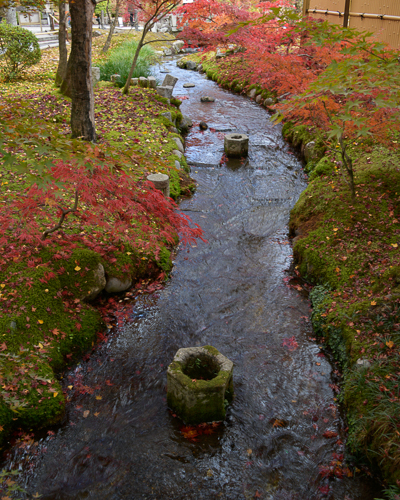
I have mentioned the canal before with regard to the aqueduct that runs through Nanzen-ji.
According to a sign along the canal several blocks away: The canal was a huge undertaking for the economic revitalization of Kyoto. This project began following the transfer of the imperial capital to Edo (now Tokyo) as a result of the Meiji Restoration of 1868.
Sakuro Tanabe (1861-1944) was the individual responsible for the oversight of this sink-or-swim enterprise for the former capital. Born in Edo as the son of a swordsman towards the last days of the shogunate, young Tanabe proposed the Kyoto-Lake Biwa canalization project in his graduate thesis from the Imperial College. Kunimichi Kigagaki, the third governor of Kyoto Prefecture, adopted the ambitious plan and put the 23-year-old Tanabe in charge.
The construction of the Kyoto-Lake Biwa canal was almost beyond the limits of Japanese technology at the time. The project was realized by 4 million workers and funds of 1.25 million yen (1 trillion yen today). Furthermore, the first appearance in Japan of the shaft boring method in which pits were dug down to the canal route for faster excavation and the combined zeal of Tanabe and the many others involved led to the completion of the project in 1890 after five years of grueling efforts.
After its construction, the canal began to be used for transporting a variety of goods from Lake Biwa to Kyoto, then onward to Osaka, for agricultural irrigation as well as for electricity at Keage, where the first electric train service started in Japan.
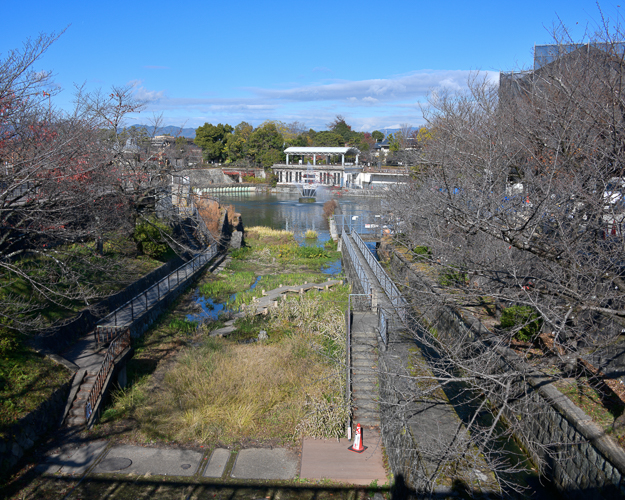
The Keage Incline is a former railway line converted into a gently sloping pedestrian trail lined with cherry trees that links the Lake Biwa Canal to Kyoto’s Kamo River.
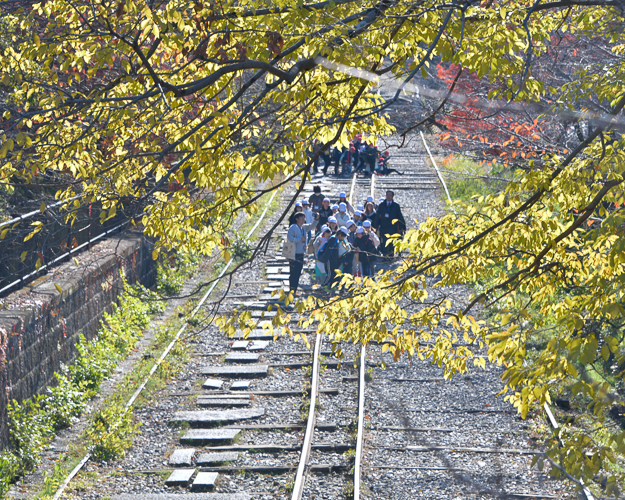
A class of schoolchildren walking the Kiege Incline
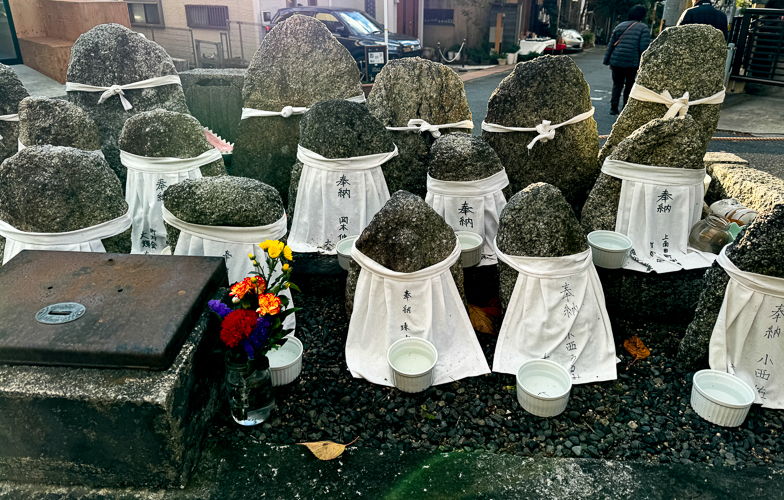
Ojizo-sama along the Philosphers Path
Ginkakuji – the Silver Pavilion
After two temples of Momiji-gari, Ginkakuji was a breath of fresh air. It was nowhere near as crowded, but for me, it ticked off a lot of the things I look for in a zen garden—water, sand, moss, and peace.
Ginkakuji is a Zen temple. In 1482, shogun Ashikaga Yoshimasa built his retirement villa on the grounds of today’s temple, modeled after Kinkakuji (Golden Pavilion), his grandfather’s retirement villa. The villa was converted into a Zen temple after Yoshimasa’s death in 1490.
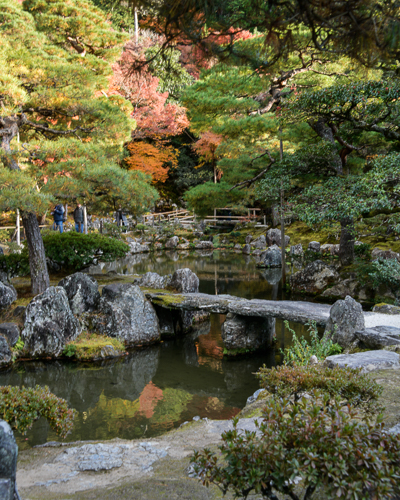
Despite its name, the Silver Pavilion was never covered in silver. Instead, it is believed that the name arose as a nickname more than a century after the building’s construction to contrast it with the Golden Pavilion. Alternatively, it is explained that moonlight reflecting on the building’s dark exterior (which used to be covered in black lacquer) gave it a silvery appearance.
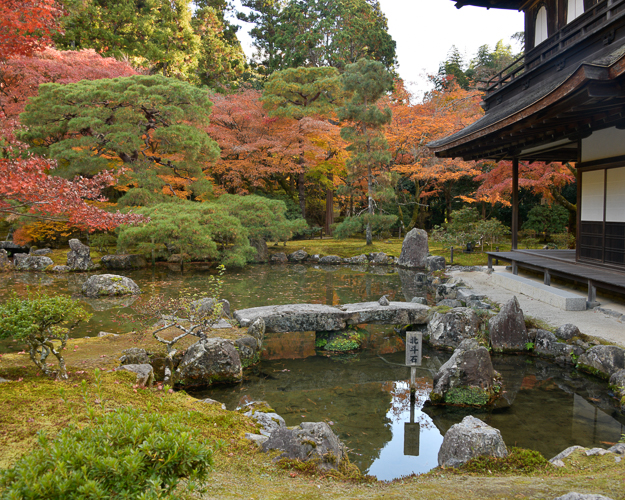
This meticulously maintained dry sand garden is known as the “Sea of Silver Sand”, with its massive sand cone (kogetsudai) named “Moon Viewing Platform”.
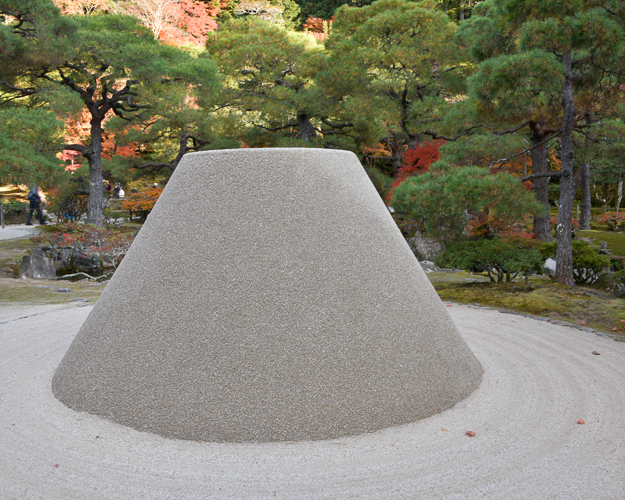
The Ginkakuji kogetsudai, whose practical purpose is nonexistent and whose aesthetic purpose can only really be guessed at, is an example of a “contemplative” use of the Zen garden, i.e., the labor-intensive construction and maintenance of the garden itself.
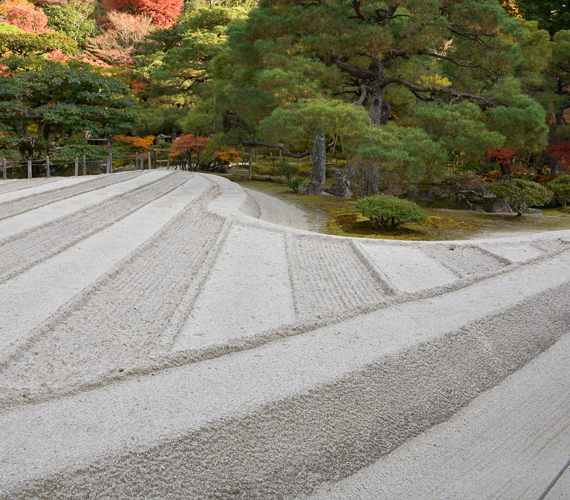
More of the sand garden at Ginkakuji
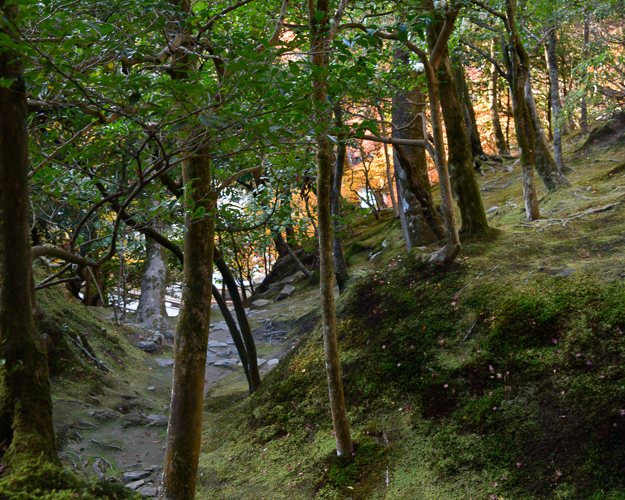
Ginkakuji is also known for its moss garden
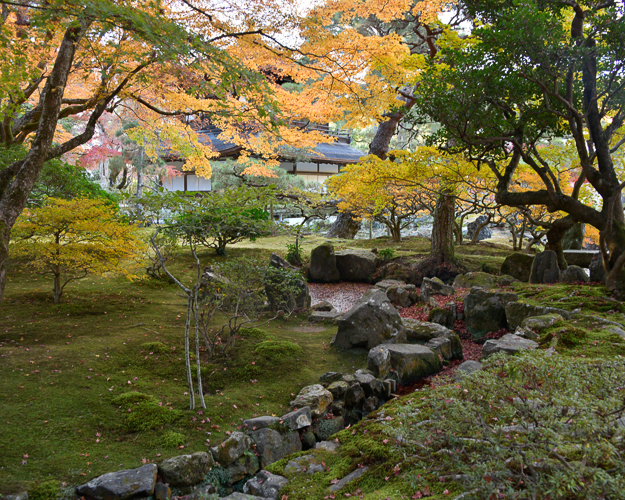
A stone path climbs a hill where you can see the entire temple grounds and the city beyond.
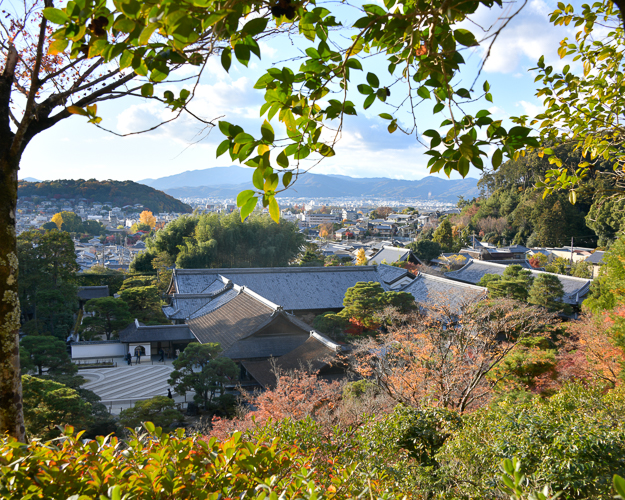
*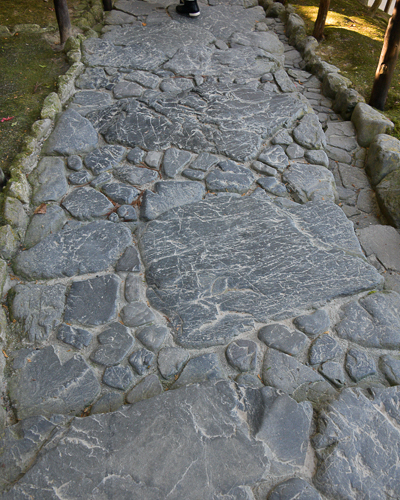
*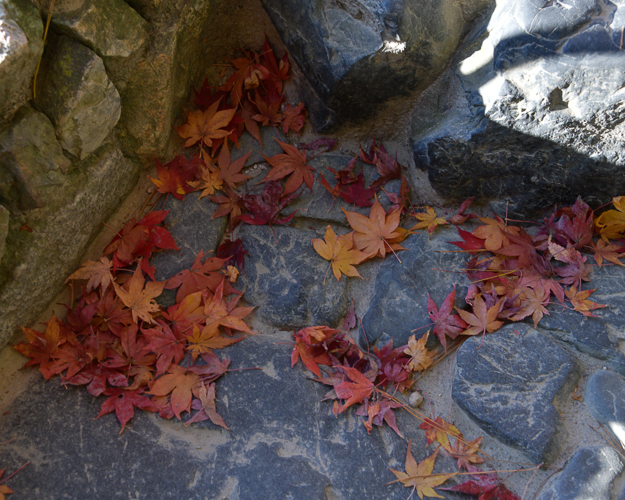
*
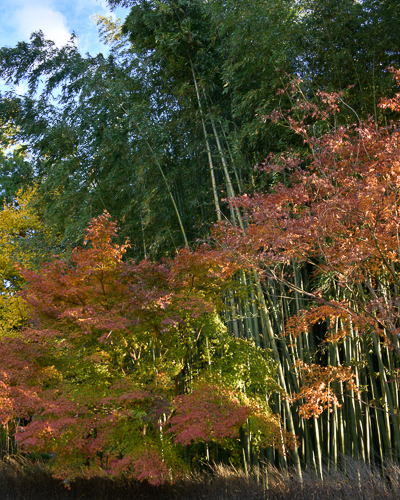
The slowly fading sun in the swaying bamboo
It has been an exhausting day, but a stunningly beautiful one as well.